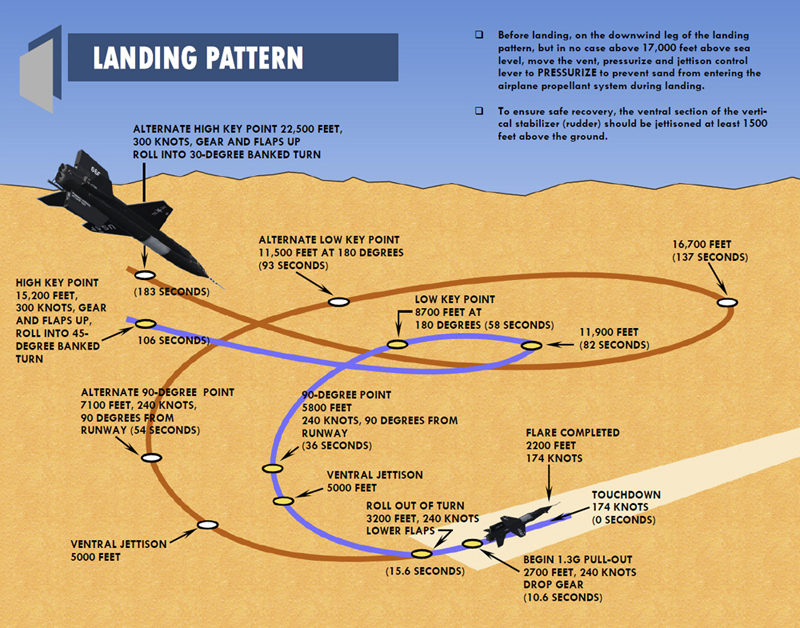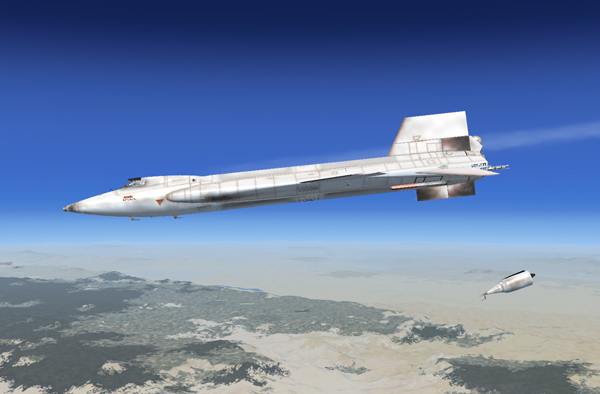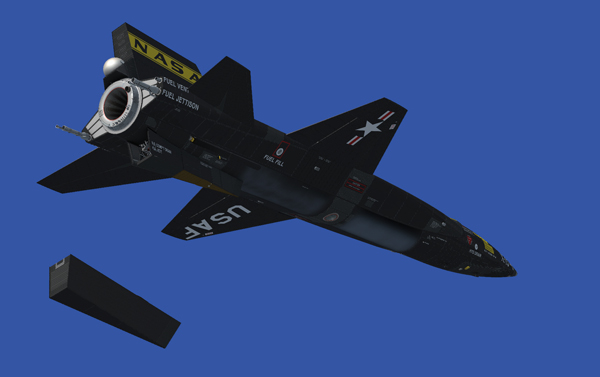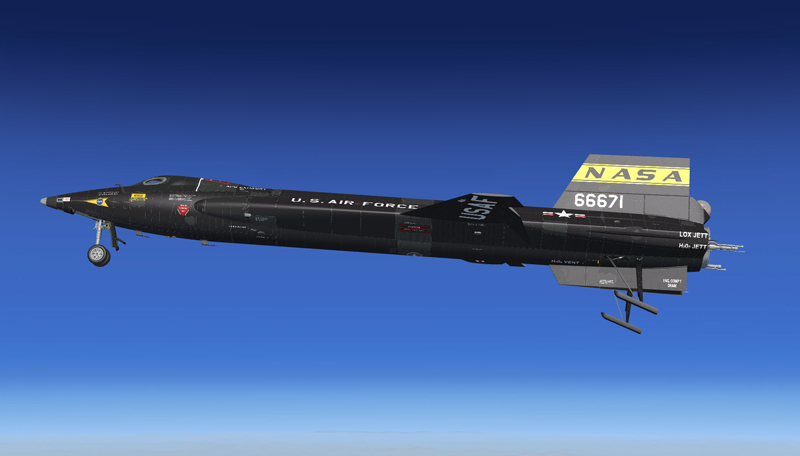
Typical landing pattern.
See above figure for the recommended landing patterns and procedures.
Glide distance may be varied with Mach to achieve the desired distance. During gliding flight, high rates of descent will be experienced; speed brakes will increase the rate of descent considerably and should only be used at speeds above Mach 1.5. Speeds above Mach 1.5 will usually occur at high altitude and will allow sufficient time to reduce the rate of descent before entering the landing phase. In case of either inability to retract the speed brakes or inadvertent extension of the landing gear before entering the landing pattern, certain precautions must be observed.
Under normal flight conditions, the dummy ramjet (or ventral) should not be jettisoned except during landing approach. To provide ground clearance for the landing gear, the dummy ramjet (or ventral) must be jettisoned before landing. The dummy ramjet (or ventral) should be jettisoned at an altitude of about 5000 feet and at a minimum of 1500 feet above the ground.
When the altimeter indicates 5000 feet, proceed as follows:
Pushing the ventral jettison button actually fires explosive bolts to release the dummy ramjet (or ventral). Note that the dummy ramjet (or ventral) is also jettisoned automatically when the landing gear is deployed.

The dummy ramjet is jettisoned. It will we recovered and reused.

The ventral is jettisoned. It will we recovered and reused.
Flaps are lowered at about 3200 feet. To lower the flaps, move the wing flap switch [9, fig. 5-4], on the left white control box, to DWN or use the "F8" key on your keyboard (or the appropriate button on your joystick).

Preparing for landing.

Landing on the lakebed at Edwards.
The landing gear is extended at about 2700 feet. To extend the landing gear, pull (drag) the landing gear handle out [65, fig. 5-1] on the left wing panel or use the "G" key on your keyboard.
Note: The landing gear is configured so it (and the aircraft) sits properly on the ground on most hard surfaces such as a concrete runway or a dry lakebed. However, it is normal for the landing gear to be partially buried into the ground or even to "float" above it if you land the aircraft on a rough, soft (sandy) or uneven terrain, for example, after an emergency landing somewhere in the desert. This also depends on the resolution of the mesh on which it sits. This is a terrain issue and not an addon issue.
See also:
Aerodynamic Flight Control System